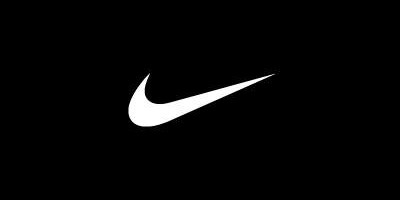NIKE: Inspiring Athletes around the World

An examination of how Nike leverages synergies between its business and operating model to dominate the market.
Driven by a clear mission, Nike is an example of a global organization that is highly effective at driving alignment between its business and operating model. The company leverages a strong business focus and unique corporate structure, which combined with key differentiating attributes (e.g., corporate structure, marketing spend, manufacturing process, technology/innovation prioritization) makes it the powerhouse it is today.
Nike’s Business Model
Nike’s mission is to:
BRING INSPIRATION AND INNOVATION TO EVERY ATHLETE* IN THE WORLD
*IF YOU HAVE A BODY, YOU ARE AN ATHLETE
In its simplest form, Nike is a sports apparel, footwear and equipment manufacturer. The company reports revenues across four major business segments:
- Footwear
- Apparels
- Equipment
- Global Brands (Converse, Hurley, Jordan Brand)
Through a combination of high quality product design, use of ground-breaking technology and expansive marketing, Nike has been able to become a global leader with annual revenues of over $30 billion. But, perhaps what is most astounding about Nike’s business is its continuous ability to grow. Currently, the company has generated annual sales growth of over 8%, but it plans to increase its growth to over 10% the next five years.

Nike’s Operating Model
One of the key drivers of Nike’s operating model is its unique corporate structure, which it calls its “Category Offense.” Based on decades of research and experience, Nike found that consumers of specific sports were more likely to share traits than those in nearby countries. As such, in 2008, Nike switched its structure to emphasize breakdowns by sport over geography. This change allowed Nike to more effectively collect consumer insights and better target new products and services to engage each segment, while ultimately resulting in geographical wins anyway.
Another unique aspect of Nike’s operating model is its corporate commitment to marketing. Each year, Nike spends over 10% of its sales on marketing, which represents a larger amount than some of its competitors’ total revenues. By spending as much as Nike does, the company is able to dominate the sports landscape through notable sponsorship agreements with leagues, teams and federations (e.g., NFL, FC Barcelona, Brazilian Football Team). In addition, in fiscal year 2015, Nike spent nearly $1 billion on athlete endorsements. This provided Nike with the ability to align its products with the best athletes in the world (e.g., LeBron, Ronaldo, Serena Williams) to further promote their products to an avid and engaged base of sports fans and consumers.

Nike also differentiates itself from its competitors via its emphasis on outsourcing. Currently, about 26,000 people work for Nike in the U.S., which represents a fraction of the company’s total workforce of over one million people (of which more than 90% are in Asia). While the company has run into trouble in the past due to labor issues, by outsourcing production Nike is able to minimize its costs, which results in improved profit margins and more competitive product pricing.
A final key to key Nike’s operating model is its emphasis on technology and innovation. By leveraging its high margin products (e.g., basketball shoes), Nike has also been able to dedicate the necessary funds to future development. Some recent business announcements that illustrate Nike’s commitment to technology include the:
- Launch of Nike’s Flyknit technology, which resulted in the creation of a super-light and precision-fit running shoe that minimized product waste
- Game-changing business partnership with Flex to innovate Nike’s manufacturing supply chain
- Recent announcement of the opening of a Nike Advanced Product Creation Center, which will work with key business partners on next-generation techniques (e.g., 3-D printing, next-generation knitting)
- Expansion of Nike’s digital business, specifically Nike.com
Overall, the effective alignment between Nike’s business and operating model has been vital to the company’s success to date and will continue to be vital in helping Nike grow in the years to come.

Sources:
Nike.com and NIKE YouTube Page
2015 NIKE, Inc. Investor Meeting Transcript
http://s1.q4cdn.com/806093406/files/doc_events/NIKE-Inc-2015-Investor-Day-Transcript-Complete-withQA-FINAL.pdf
“Nike’s Master Craftsman” (Fortune)
http://fortune.com/2015/11/12/nike-ceo-mark-parker/
“Obama at Nike headquarters: why push trade deal at an outsourcing giant?” (The Guardian)
http://www.theguardian.com/us-news/2015/may/08/obama-nike-free-trade-deal-sanders
“How Nike become king of endorsements” (CNN Money)
http://money.cnn.com/2015/06/05/news/companies/nike-endorsement-dollars/
“Nike Engineers Knit for Performance” (Nike)
http://news.nike.com/news/nike-flyknit
“Nike’s Manufacturing Revolution Accelerated by New Partnership with Flex” (Nike)
http://news.nike.com/news/nike-s-manufacturing-revolution-accelerated-by-new-partnership-with-flex



Interesting post. Do you think there could be some synergies between the UFC and Nike once the Reebok deal has expired? Or do you think the UFC might be seen as too much of a blood sport?
That is an interesting question. I think that ultimately there could one day be synergies but Reebok has truly transitioned their entire brand to focus on true feats of athletic fitness, including UFC, fighting and cross training. It would be hard to see Reebok losing hold of this market since it would likely result in the end of their business altogether.
In addition, as you said, Nike may be hesitant to move into the UFC market where it would be associated with violence and move away from its goal to position itself for every athlete in the world (Nike defines athlete as anyone with a body…so everyone).
Thanks for sharing this post, Daniel!! Looks like Nike is performing outstandingly based on sports-oriented brand positioning, innovation led product focus and strong mass advertising. So far there seems to be no weakness for Nike, but I see one concern on the scandal associated with sports players – scandals of Tiger Woods and Lance Armstrong seems to throw some negative perception to Nike brand in long-term. Do you think these scandals significantly impact the brand equity of Nike?
Satoshi
Great question Satoshi! I definitely think that is a major risk of the endorsement piece of Nike’s business. Fortunately, for most deals they do have the option of opting out due to morals clauses. In other cases, I think they are forced to think carefully about how they utilize those athletes moving forward – often being forced to distance themselves, especially in the short term.
Ultimately, Nike is too big though and too successful as a company to be TOO impacted.
Awesome post! It makes you wonder though why Nike is not trying to create more sports-specific segments, in widely popular sports, like Cricket or Swimming. They have so much to offer, in terms of market research, consumer knowledge and innovation. Do you think they will continue to expand, and perhaps offer customized innovative experiences in new sports? Or do you feel their focus into the 5-10 mainstream ones is necessary to continue innovating?
Thanks Michael! That is a great question. I think Nike is content to grow their business by dominating the mainstream sports and athlete markets (i.e., athletics/running, basketball, soccer/football), but at some point I could definitely see them move in to cricket especially. As they continue to establish themselves as the market leader, it is difficult to not see them one day owning the entire marketplace.
Great post! It intrigues me that you mentioned Nike’s emphasis on sports segments rather than geography in organization structure as one of their edges. Is Nike the only one with such structure among the competitors? How do they coordinate among segments in operations? For example, regarding distribution managements, I think most of the stores carry products across segments. How does Nike manage these stores under such organization structure?
Thanks for commenting Haochen! That is a great question. Based on my research (and some past experience), Nike seems to take its segmentation by sub-group over geography most seriously. Of Nike’s competitors, Under Armour is still too small internationally to really do anything but sort by segment and adidas prioritizes geography over segment.
That being said, stores are still free to carry products across segments, but insights and decisions and driven by these groups rather than at a geographical level. Employees focused on retail and distribution work with the local partners to make sure the stores have what they need to maximize product sales.
Thank you for this interesting post!! I am interested in sports industry and back in my job I used to research Wearable products related to sports industry too, so I am curious about the future of Nike!
It seems “so far so good” status for Nike, but I think it is hard for Nike to grow even further from now on. Nike tried to expand its product line with Fuelband but it officially closed the business, firing members of the division, while Adidas keeps trying to expand towards product innovations such as “Smart Ball” and “miCoach” trackers. What do you think about the future of Nike? Will they just go for the Nike+ application? or Will they introduce more innovative hardware products in the near future? I really want to hear just your opinion, as the one who has experienced in sports industry for years!
Thank you so much for the note Ryan! It is definitely an interesting question. Nike plans to grow its business to $50B in sales by 2020 (from $30B today) mainly through an emphasis on e-commerce, its women’s business and the expansion of the Jordan brand. Clearly Nike believes that they can continue to grow through new technology and emphasis on consumer groups that haven’t matured as much.
I think that Nike will definitely continue to innovate but I think they have learned from the Fuelband and will primarily focus on growth through their strengths, rather than overtly expanding their product lines. In addition, Nike will explore opportunities to grow their strengths even further, which is evident by them taking the NBA deal from adidas and creating NBA jerseys starting next year.
Great post D-shaq. For me there are two things that Nike does better than anybody else: 1. having a global reach and its innovative shoe designs.
Growing up in Senegal there were 3 things I knew about America: rap stars, Coca Cola, and Nike. Nike was able to connect with the global world through its endorsements of popular athletes. You saw that in the Nike case and how the company sponsored the Brazil team. I grew up idolizing that team and over time, as I became more interested in basketball and tennis, I started loving Kobe Bryant, Nadal, Ronaldo, Federer (all sponsored by Nike).
As an avid soccer player, I loved Ronaldo and the Mercury vapor shoes. I also loved Kobe Bryant’s shoes, shoes I proudly wear today. The company has found ways to innovate in its shoes and keep being relevant to its billions of customers worldwide.
Its challenge remains to do local production in emerging markets while respecting human rights. There were articles written that Nike works its employees very hard and the pay was low. If Nike is able to scale up manufacturing in these markets while maintaining a strong human rights record, it will continue to grow at double digits
The second aspect that stands out to me is it
Sijh – thank you so much for the comment. It looks like the end of your comment may have been cut off but it is interesting to hear about your initial connection to Nike growing up in Senegal.
I think there is no doubt that Nike’s strategy of aligning with the best players and teams has driven their business to great heights. At this point, Nike is synonymous with the best of the best, which further drives their consumers to purchase Nike over any of its competitors. It will be interesting to see if Under Armour’s recent string of success with player endorsements (e.g., Cam Newton, Jordan Spieth, Tom Brady, Stephen Curry) continues and ultimately can compete with Nike.